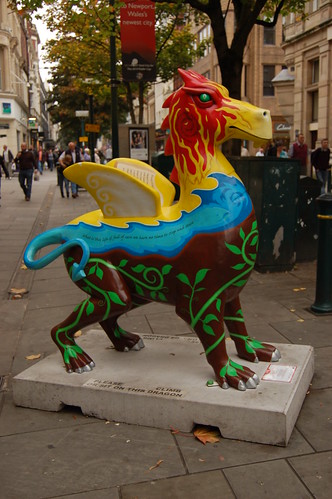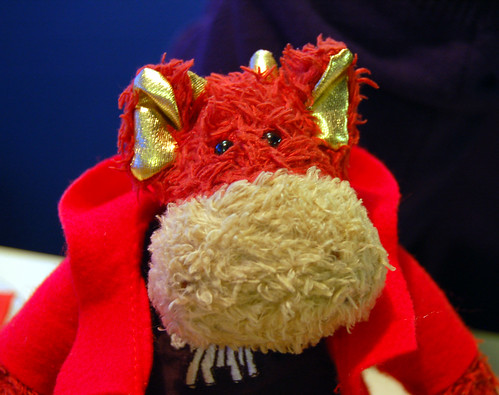
Last weekend Eldritch talked me into taking him and the lads (and his Unclclel Kevin) to Wales to see a fantastic parade of Superdragons.
They've been in and around the town of Newport since July, parlty because of the Ryder Cup golf and partly because Newport is a bit of an arty place.
There were more than 50 of them in various sites and we managed to track down about 30 or so. Each one was decorated by an artist or a local group and they all had their own theme.
We learned a lot about the place and met a lot of lovely dragons along the way. This one was in the old Roman town of Caerleon and was very Welsh. He was called Celtic Dragon and Eldritch loved him because he was red!
The dragons have all been collected now and are having a party in a local shopping centre before being put up for auction on Wednesday, October 27. Proceeds will be shared between wildlife charity The Born Free Foundation and a cancer patients support group called Tenovus.
If you'd like to know more about the Superdragons you can find out about them here.
They've been in and around the town of Newport since July, parlty because of the Ryder Cup golf and partly because Newport is a bit of an arty place.
There were more than 50 of them in various sites and we managed to track down about 30 or so. Each one was decorated by an artist or a local group and they all had their own theme.
We learned a lot about the place and met a lot of lovely dragons along the way. This one was in the old Roman town of Caerleon and was very Welsh. He was called Celtic Dragon and Eldritch loved him because he was red!
The dragons have all been collected now and are having a party in a local shopping centre before being put up for auction on Wednesday, October 27. Proceeds will be shared between wildlife charity The Born Free Foundation and a cancer patients support group called Tenovus.
If you'd like to know more about the Superdragons you can find out about them here.





